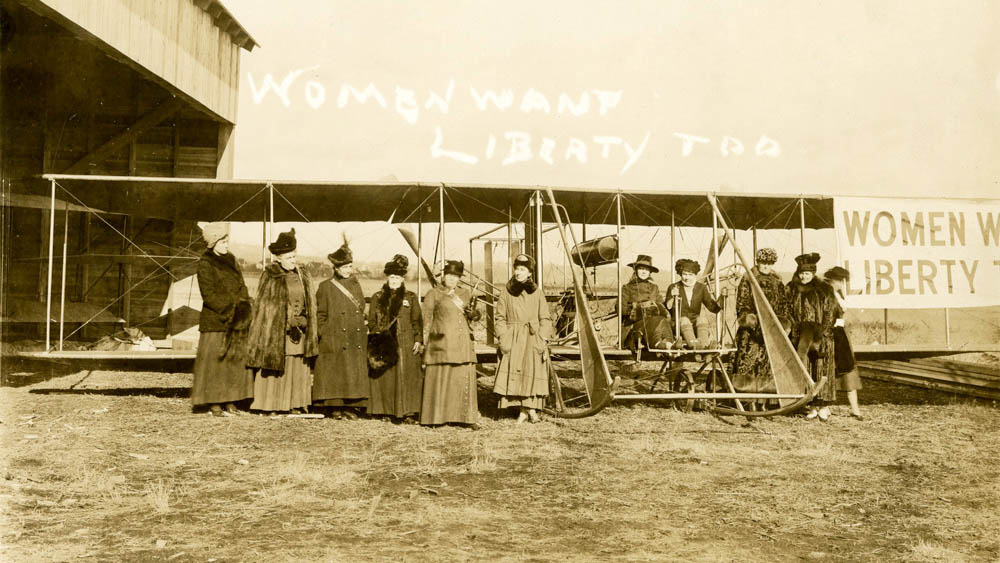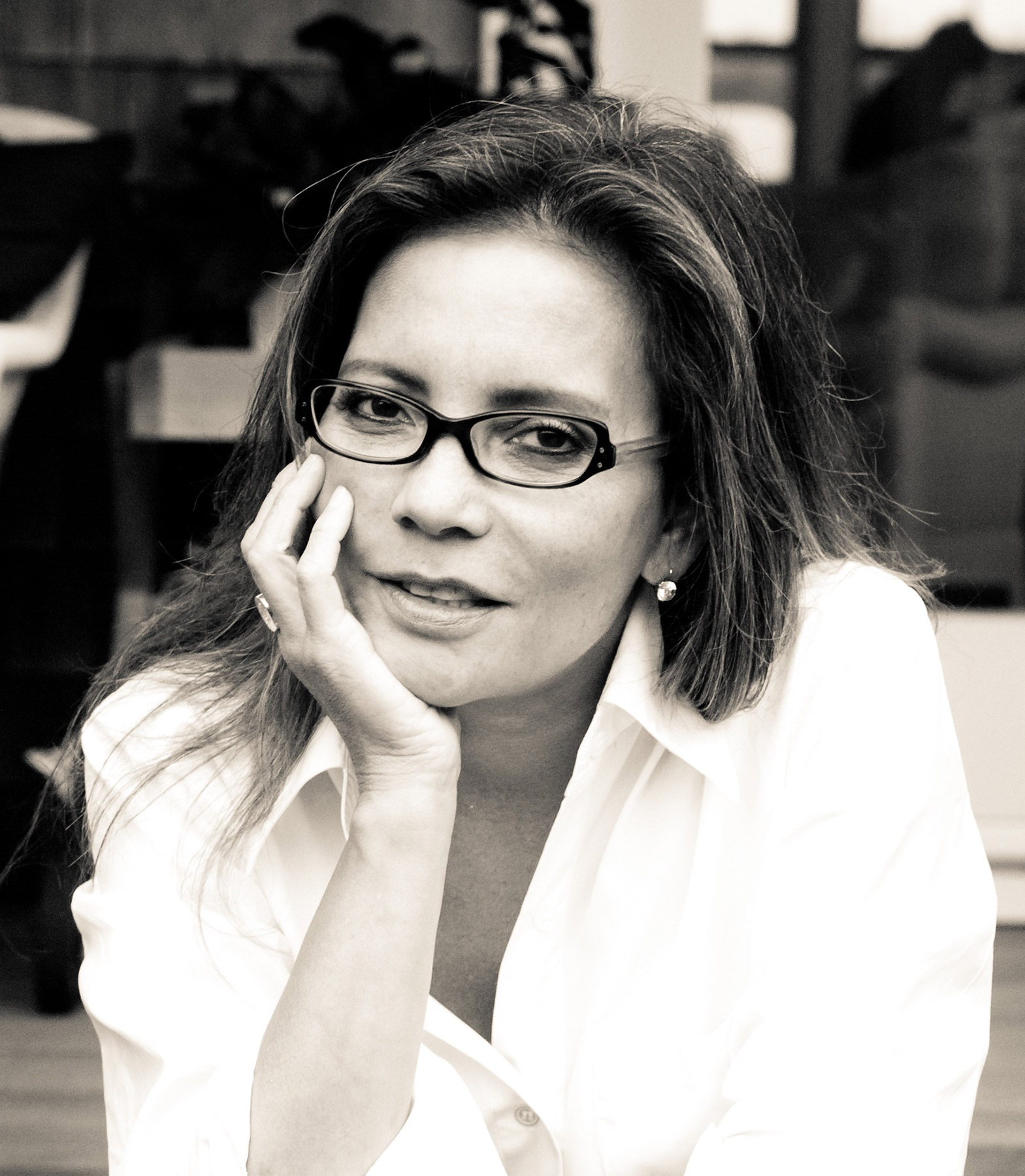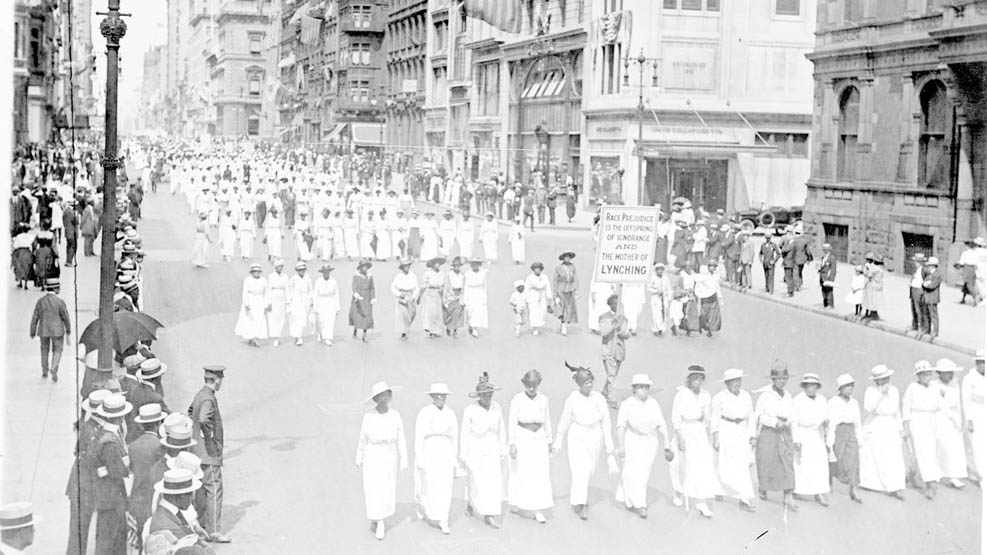Hotbed: A Centennial Celebration of Women’s Suffrage New Exhibition Captures Voting Rights Movement
Hotbed: A Centennial Celebration of Women’s Suffrage New Exhibition Captures Voting Rights Movement
Across the country, the decade leading up to the passage of the Nineteenth Amendment in 1920 was marked by the passion and commitment of young women who were ready to make history. Perhaps nowhere was this energy more evident than in New York City’s Greenwich Village. Hotbed, a new exhibition at the New-York Historical Society (N-

Women Want Liberty Airplane Group (“Suffbird”), 1916. In a remarkable series of stunts, some bold suffragists took to the skies in biplanes to drop leaflets into crowds.
Photo: New-York Historical Society Library“Young people were drawn to Greenwich Village by the cheap rents and Bohemian lifestyle,” explains Valerie Paley ’83, Vice President, Chief Historian, and Director of the Center for Women’s History at the museum. The area quickly became an intellectual enclave as well, one that allowed residents to “live their lives in a very modern and unusual way and to participate in radical ways of thinking,” she adds.

Visitors to Hotbed begin their journey in a space that recreates a Greenwich Village café, where residents met to exchange ideas, collaborate on creative productions, and plan public events. Displays showcase radical publications like Max Eastman’s the Masses magazine; images taken by America’s first female photojournalist, Jessie Tarbox Beals; and contraceptive devices and information distributed by reproductive rights activist Margaret Sanger.
While Hotbed celebrates the collective efforts of thousands of unnamed women, the exhibition does single out a number of important contemporary figures in politics and the arts, including poet Edna St. Vincent Millay, class of 1917; journalist Lois Long, class of 1922; and suffragist Inez Milholland, class of 1909. (In addition, We Rise, a new short film narrated by Meryl Streep ’71, plays daily in the museum’s main auditorium, presenting stories of women whose quest for change had enduring effects.)
“So often in history institutions, you see a linear way of thinking about and explaining the past,” Paley says of Hotbed. “By situating our suffrage exhibition in Greenwich Village in the 1910s, we’re able to tell the story of how a group of sexy, youthful women—thinkers, artists, writers, and activists—affected change far beyond the confines of their neighborhood, not just across New York State but ultimately the nation.”

In addition to widespread participation in public protests, Paley points out that this generation of suffragists used its own forms of “social media” to support its cause. Unconventional tactics included the release of pro-suffrage flyers from a biplane piloted by a woman and the sensation caused by a young actress who painted “Votes for Women” on her back, which she then bared for a photographer. Postcards, posters, and short films are also on view in Hotbed. These materials used striking graphics and, in some cases, humor to draw supporters to the cause. The final room in the Joyce B. Cowin Women’s History Gallery brings the visitor back to the present, with dramatic images of more recent women’s marches for peace and equality, including the 2017 Women’s March in Washington, D.C.
Paley, who assumed the role of director of the center at its inception, came on board at N-YHS in 2002. Her installation, New York Rising: New York and the Founding of the United States, was created in time for the 2011 reopening of the museum following a $70 million
Hotbed will remain on view through March 25, 2018. Read more about Vassar's involvement in the suffrage movement.

Silent Protest against the St. Louis Riots, 1917. Hotbed details the involvement of women in a range of social movements, including an anti-lynching campaign.
Photo: James Weldon Johnson Collection in the Yale Collection of American Literature, Beinecke Rare Book and Manuscript Library